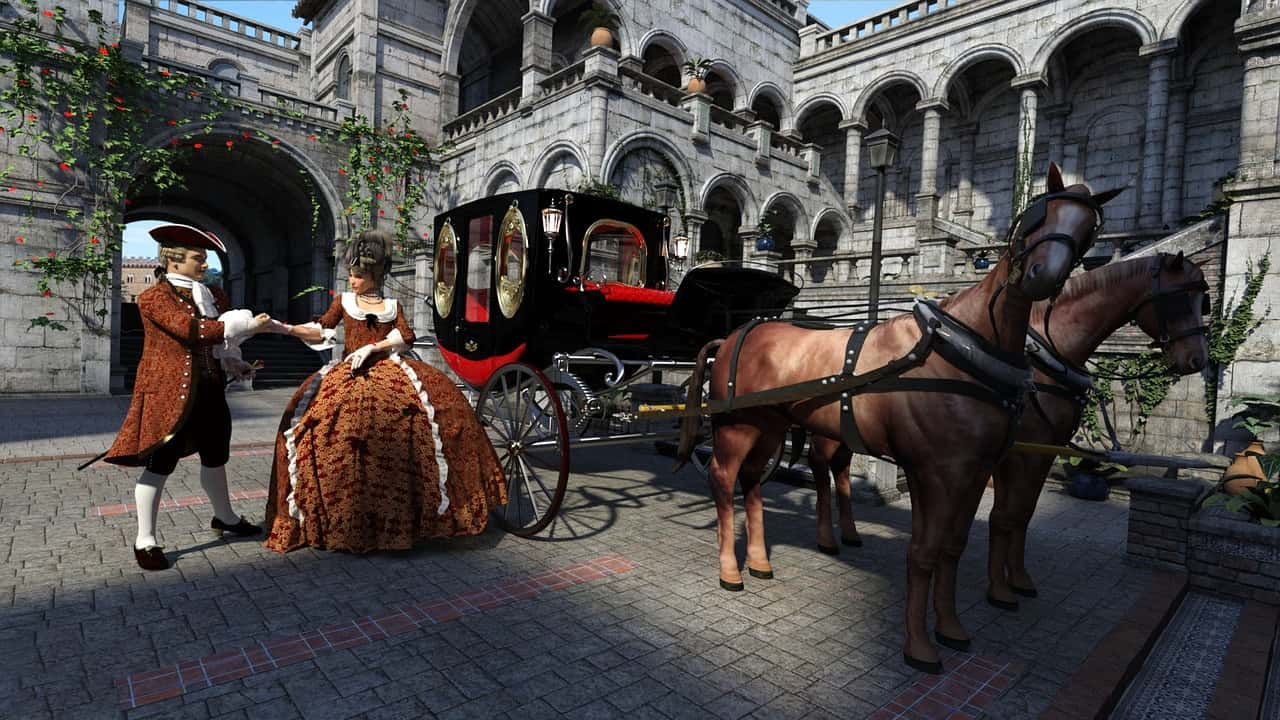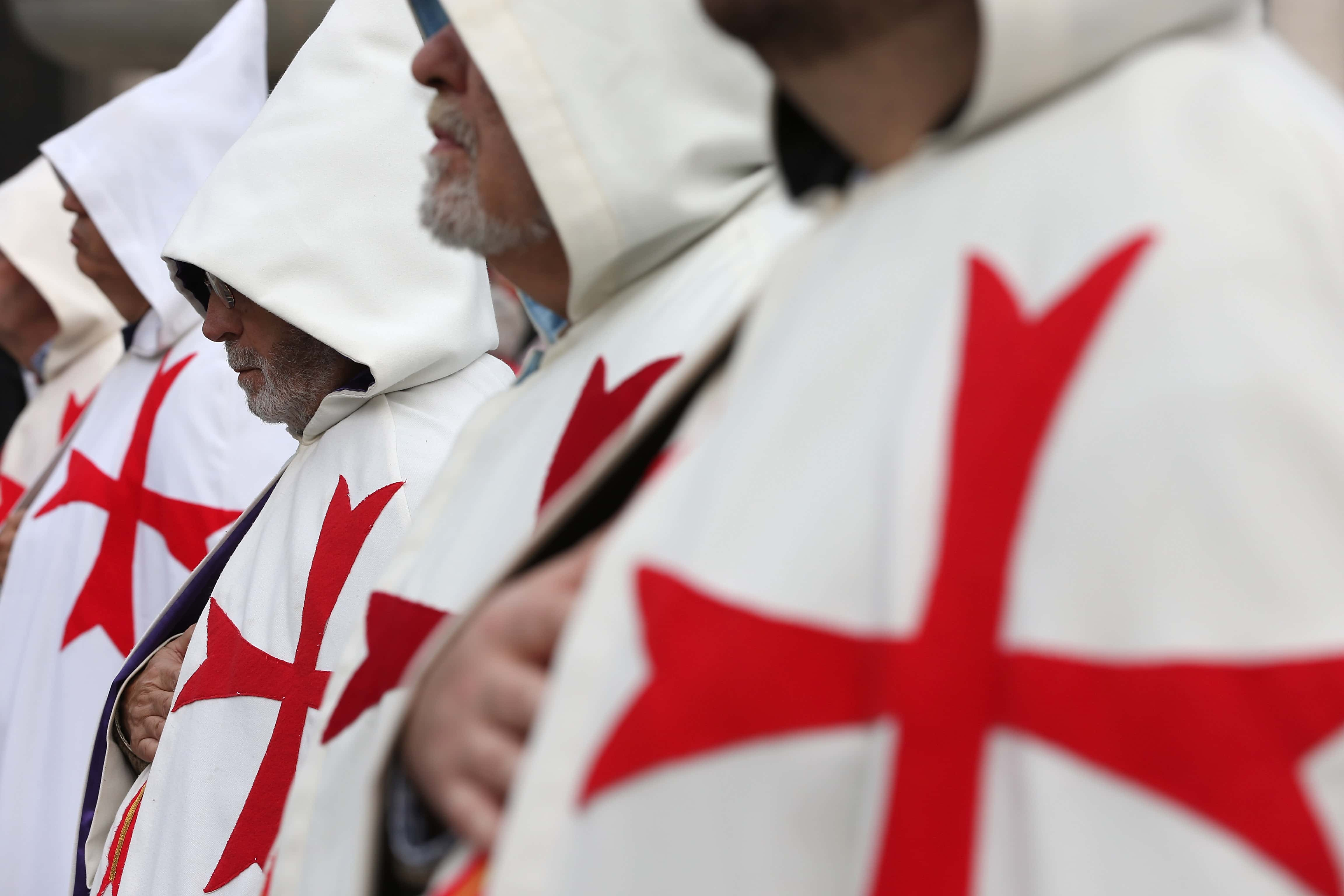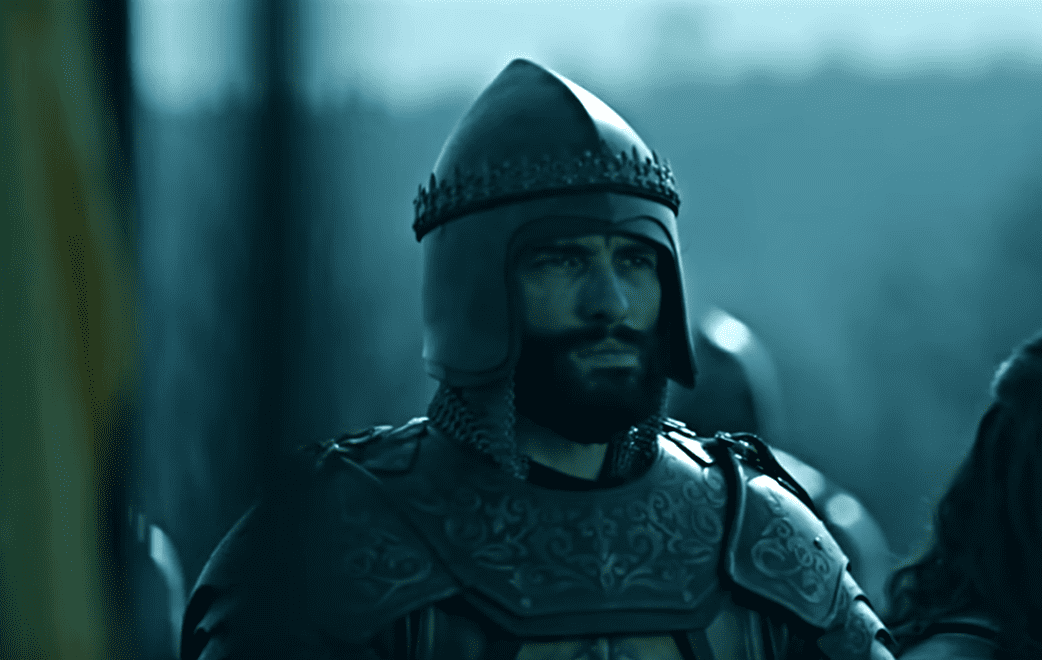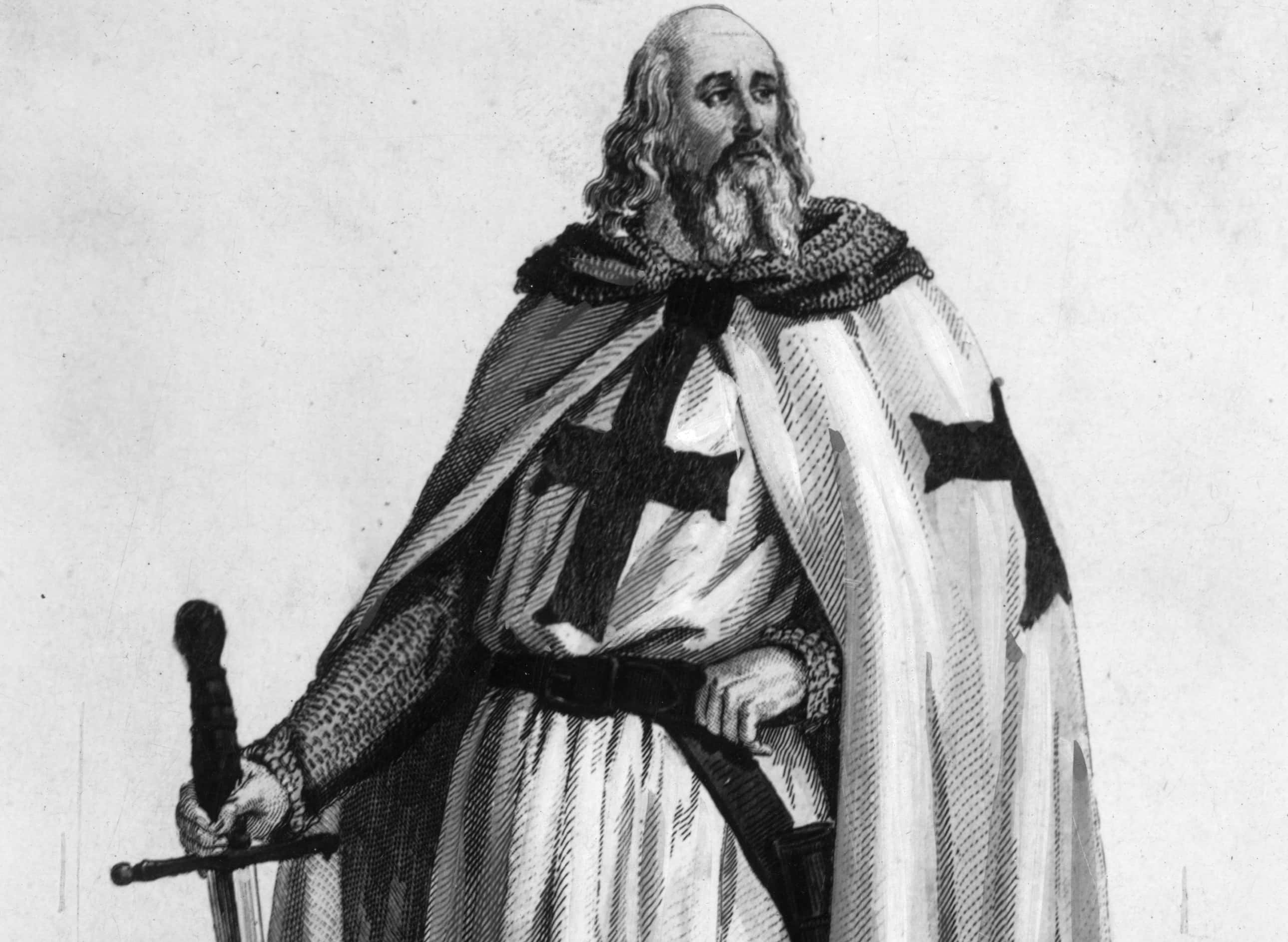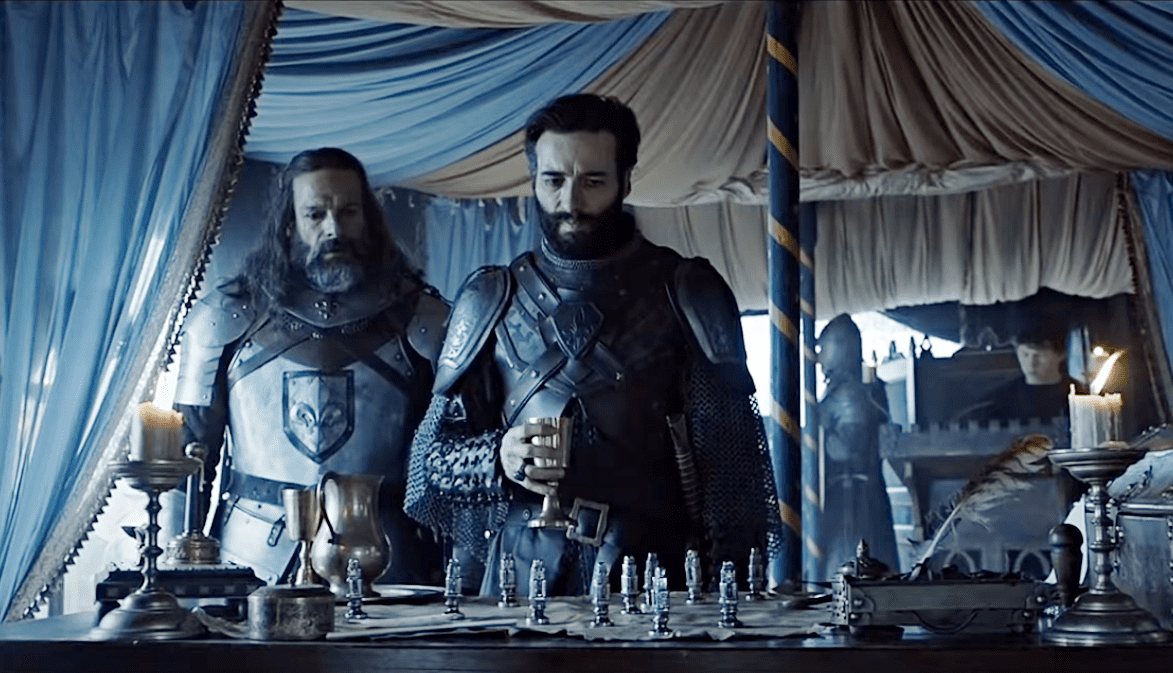Philip IV, otherwise known as Philip the Fair, was born sometime between April and June 1268 to Isabella of Aragon and King Philip III of France. He went on to rule as the King of France from 1285 until his passing in 1314, as well as ruling Navarre jointly with his wife Joan I. He was one of the most significant rulers of the Medieval era, and his reign is widely remembered for the dissolution of the Knights Templar, and his subsequent strengthening of the monarchy. Here are 45 facts about Philip IV, the fair king.
1. In Appearance Only
Philip IV did not earn his nickname because he was a fair king. The nickname arose because of his good looks—but he was actually pretty inflexible, earning him other names. One of his adversaries, Bernard Saissett, the Bishop of Palmers once said: “He is neither man nor beast. He is a statue."

2.Tragic End
Isabella of Aragon was six-months pregnant with her fifth child when she went with her husband on the Eighth Crusade. Tragically, on January 11, 1271, she fell from her horse on the way back, giving birth prematurely to a stillborn son. 17 days later, she succumbed to her injuries, leaving the not quite three-year-old Philip and his brothers without a mother.
3. First of the Accursed Kings
From 1955 to 1977, the French historical novelist Maurice Druon published a series of seven novels about the French monarchy called The Accursed Kings. The first book in the series follows the reign of King Philip IV, and is titled The Iron King. The series is also credited with being the original Game of Thrones, and George R.R. Martin has admitted that these books, along with the Wars of the Roses, were his inspiration for the books.
4. A Saintly Role Model
After Isabella’s passing, Philip’s father immersed himself in campaigning and administrative interests, seeing little of Philip or his brothers. Not finding much of a role model in his father, Philip started hero-worshiping his deceased grandfather Louis IX, buying into the stories of his saintly virtues and his high standards of rule.
5. First Queen
Joan I of Navarre didn’t come by her throne by being the firstborn. Before she was born, her brother Theobald lost his life after falling from a castle wall, leaving her as the only legitimate heir to her father’s throne. Barely a year and a half later, her father also perished, making her the first Queen of Navarre.
6. Seeking Protection
Being that she was only a year and a half old when she inherited the throne of Navarre, Joan’s mother Blanche of Artois acted as regent for her daughter. This made baby Joan’s situation pretty precarious, as two foreign kings, Alfonso X of Castile and Peter III of Aragon, both wanted her throne and were prepared to take it any way they had to—either by marriage to Joan or more violent means.
Realizing that the infant queen would be under constant threat, her mother did the only thing she could. She took Joan and fled to France, seeking protection from Philip III, leading to the signing of the Treaty of Orleans.
7. Marital Treaty
The Treaty of Orleans was signed in 1275 by Philip III and his cousin Blanche, pledging one of his sons to her daughter Joan I of Navarre, who was just two at the time. Pope Gregory X was clear on the point that he wanted Joan to marry the younger son, likely not wanting to have Navarre under French rule, but Louis passed on a year later, leaving Philip as the new heir to the throne. The pair were married when she was 11 and he was 16, making her the Queen Consort of France.
The Pope was probably pretty upset by this new development, but because of the treaty, there was nothing he could do to stop it.
8. Not Quite Equals
Edward I of England and King Philip IV of France may have been cousins, but they certainly weren’t equals. Ever since the time of William the Conqueror, English kings held dukedoms in French territories, which made them subordinates of the French king. This arrangement was a constant source of conflict between the English and the French and was the instigator for centuries of years of fighting between the two countries, including the Hundred Years’ War.

9. Taking it Back
The Anglo-French war of 1294-1303 started as many wars did, which was over land. After a conflict with Philip, Edward was forced to hand over Aquitaine (which included Gascony) to his cousin, but did so on the condition that it would be returned to him after a grace period. Philip, of course, had no intention of doing anything of the sort and decided to try and take over all of the English territories in France instead.
10. Making Peace
Philip IV had no qualms whatsoever about going to battle, but he had one teeny tiny problem: a lack of funds. He eventually had to initiate the peace process with England in 1303 after running out of funds, and he definitely didn’t come out the winner. As part of the negotiations, he had to return Gascony to England, and agree to marry his daughter to Edward’s son, the Prince of Wales.
11. A New Dispute
You’d think that with England and France essentially married to each other, the two countries would be able to get along. They did, but not for long. The marriage between Isabella and Edward II eventually led to a battle over French succession when Charles IV, the last of Philip IV’s sons perished, leading to the Hundred Years’ War between England and France.
12. It’s On
The Aragonese Crusade was a part of the bigger battle for control of Sicily and Naples known as the Wars of the Sicilian Vespers. The wars began when Peter III of Aragon invaded Sicily and defeated his rival, the unpopular Charles I of Anjou (brother of Louis IX, who was the grandfather of Philip IV and King of France) and seized control of Sicily. Being that Pope Martin had helped Charles to conquer Naples and Sicily, he was definitely not happy about Peter III’s defeat of Charles and declared a crusade (a religious conflict) on Peter III, claiming him powerless to rule.
13. Taking Sides
When the Wars of the Sicilian Vespers broke out, France, then ruled by Philip III, supported his uncle Charles and Pope Martin handed control of Aragon to Charles, Count of Valois, who was the older brother of Philip IV and nephew of Peter III through his deceased mother Isabella. Civil conflict broke out in Aragon, with Peter’s brother King James II of Majorca supporting the French.
Navarre, which was now ruled by Philip IV (thanks to his marriage to Joan of Navarre) bordered Aragon, putting Peter III at risk of invasion from Navarre. While Navarre itself never launched a full-scale invasion, Philip IV joined his father in the primary army.
14. Putting an End to It
Despite supporting his father in the Aragonese Crusade, Philip IV was never really in favor of the whole quest to put his brother on the throne of Aragon. The battle was backed by his stepmother, for whom he had no love lost. When his father passed on and he became king in 1285, he negotiated peace and possibly arranged for the Crusader army to safely get out of Aragon.
15. One True Love
Joan of Navarre basically grew up with Philip IV, having been under the protection of King Philip III since she was two. They were 11 and 16 when they married, and whatever else he was, Philip was reportedly a devoted husband who loved and respected his wife. After her passing in 1305, he never married again, despite the additional wealth and political gain that remarrying would have given him.
16. Cash-Starved
Throughout his reign, Philip IV was plagued with money problems. Some of them were his own fault, due to his constant warring with the English, while some were inherited from his father’s failed Aragonese Crusade. Needing to find a way to make money fast, he had all of the Jews in France apprehended, seized all of their assets, and used the money to fill his coffers.
17. There and Gone and Back Again
As if throwing them in prison and taking all of their stuff wasn’t enough, Philip IV took it a step further and banished all of the Jews from France in 1306. What he didn’t anticipate was the reaction he would get from the people. Many of the Jewish people in France were well-regarded businessmen who made their customers happy, and the king’s loan collectors were not thought of kindly.
Because of this, in 1315, Philip’s successor invited them back into France with a guarantee that the government would leave them alone for 12 years, but in 1322, his successor broke that promise and kicked them out again.
18.Banished
The Jews weren’t the only target of Philip’s money-grabbing schemes. When it came to money, anybody who seemed to have some was fair game, beginning with the Lombard bankers. The Lombard bankers were Italian bankers living in France who had supposedly lent Philip a great deal of money. Rather than pay it back (which he never really had any means to do), he made up charges against them, kicked them out of France, and kept their goods and money. That’s one way to get rid of a loan.
19. Growing His Kingdom
Philip IV was a strong believer that everybody in his kingdom owed him their obedience, but his kingdom wasn’t quite all of France. There were bishops in the south of France who lived more or less apart from his rule, and the super wealthy estates of Guienne (Aquitaine, which was controlled by England) and Flanders were also independent of his control. Maybe he thought that taking these estates would be easy, but Edward I fought back, and Flanders wasn’t about to give in either, eventually leading to wars with both England and Flanders.
20. Lobbying for Support
Before his invasion of Flanders, Philip IV kissed up to the Flemish nobles trying to win their support. Some of the nobles did end up aligning with him, but not Guy de Dampierre, Count of Flanders. He led a faction who opposed French rule, and in an effort to form an alliance with England, arranged marriage between Edward’s son and his daughter Philippa.
21. Not Happening
Philip got wind of this and imprisoned Guy de Dampierre and two of his sons, forcing him to call it off. Poor Philippa was also imprisoned, and she remained so until her passing in 1306, possibly by poison.
22. Temporary Truce
In June 1297, France invaded Flanders and had a series of successes. Meanwhile, England was facing a war with Scotland and bowed out of the conflict. That same year, the French and the Flemish signed the Truce of Sint-Baafs-Vijve which ended the conflict and left Flanders in peace until its expiration, three years later in 1300.
23. No More Taxes
In 1296, a conflict between the King and Pope Boniface began over taxes. Boniface issued an official order stating that kings were not allowed to tax the clergy without the Pope’s permission, which posed a serious problem for Philip, who to this point had seen the church as a good source of cash. He also believed that it was his right to tax whomever he wished and wasn’t about to let the Pope tell him otherwise.
24. Tit for Tat
Philip was known to be a vengeful king and did not take the Pope’s actions lying down. First, he issued an order of his own forbidding any exports of gold and silver and other valuables without the King’s permission. This was intended to keep the pope from collecting donations from wealthy French Catholics, which would hurt the church and the pope.
25. Listen Son
In 1301, Philip took another swing at the Pope when he apprehended a French Bishop, one of Boniface’s allies, on trumped-up charges. Boniface responded in kind, issuing an official document titled Ausculta Fili or “Listen Son,” demanding the Bishop be released. The document claimed that he had power over the King, and threatened to punish him.
26. Illegitimate Pope
By 1303, Philip and the Pope were at each others throats. In 1302, the Pope issued another decree called Unam Sanctam which declared his right to rule absolutely, even over the King. To be extra sure Philip understood his position, he excommunicated him and his henchmen. Philip’s response was to call a meeting of the legislative body in France in 1303 to try and declare the pope illegitimate and have him removed.
To make his case, he presented a list of charges that included heresy, blasphemy, sodomy, and sorcery. Enemies of the Pope also spread rumors that the Pope had slain his predecessor by putting a nail in his head, but modern forensic evidence suggests that this probably wasn’t true.
27. Disposing of a Problem
Philip finally got rid of his papal problem by sending his personal thug Guillaume de Nogaret out with an army to take care of Boniface. De Nogaret was a pretty nasty character and with the help of Italian allies, they kidnapped Boniface and held him prisoner for three days while they beat the heck out of him. When they were done, they released him, but Boniface perished a month later and Philip was victorious. De Nogaret was also rumored to have poisoned the successor to Boniface, who only managed to hold the office for a year.
28. A New Home for the Pope
For a brief period between 1309 and 1376 known as the Avignon Papacy, the papal capital moved from the Vatican in Rome to Avignon in France. Not wanting to take his chances with another Pope he couldn’t control, Philip bought enough French Cardinals to match or outnumber the Italian ones, until there were enough of them to elect his handpicked puppet. It only took a little bit of convincing to make the new Pope believe that his life would be in danger if he stayed in Rome, and in 1309, he moved the holy capital to Avignon where it stayed for nearly 70 years.
29. It’s Not Over Yet
With Boniface gone and a Pope in power who was happy to do whatever Philip wanted, that should have been the end of the story—but it wasn’t. Philip’s hatred for Boniface exceeded his passing, and he wanted the new Pope to exhume his predecessor’s bones and burn them. That demand was beyond what even Pope Clement was willing to do for Philip, but he didn’t quite have the nerve to outright refuse. He stalled for as long as he could, but the impatient Philip had already had a hand in slaying two popes, so in 1310, he arranged a posthumous trial.
30. Exonerated
After hearing all of the evidence, the tribunal was unable to reach any decision regarding Boniface, which was not what Philip wanted or expected. To make him happy, Clement issued a new official document praising the King, reversing Boniface’s orders against him, and clearing him of any wrongdoing in Boniface’s kidnapping.
31. An Unusual Alliance
One of Philip’s more unlikely alliances was with the Mongol empire in the Middle East. The Uyghur monk Rabban Bar Sauma contacted Philip, proposing that they join forces to fight the Muslim slave soldiers. In return, he offered to return Jerusalem to the Christians once they took it back from the Muslims. Philip was amenable to the idea, but nothing ever came of it.
32. One More Try
In 1305, the new Mongol ruler decided to try another kick at the can, this time sending letters to Edward I of England, the Pope, and Philip proposing an alliance to fight the Muslims. Once again they planned a crusade but were delayed and it didn’t happen. At the Council of Vienne in 1312 the idea for another crusade was floated around. The following year, Philip vowed to participate in the crusade but perished in 1314 from a hunting accident before he could make good on that promise.
33. New Target
Throughout the Middle Ages, the Knights Templar grew in size and status throughout Western Europe, becoming the primary bank to many of Europe’s monarchs and nobles, including King Philip IV. Philip was seriously in debt to the Knights Templar, believing that he had a limitless source of income. The Templars had other ideas, and expected him to pay it back.
Unfortunately for them, as he demonstrated with the Lombard Bankers and the Jews, his answer to getting rid of debts was to get rid of the debtors. The Templars were no exception, and he systematically set out to end their influence and solve his money problem at the same time.
34. Arrest Them All!
When Philip decided to get rid of the Templars, he knew he had to make sure he had rock solid legal reasons for eliminating them. His plan was to arrest them all on charges of heresy, and then rough them up them for a quick confession so that nobody had time to help them. These charges would also position him favorably as a servant of God and would avoid a repeat of the negative reaction he received with the expulsion of the Jews.
35. D-Day
On Friday 13, 1307, Philip put his plan into action. The first wave of arrests captured as many as 625 men, including the Grand Master; the Visitor-General; the Preceptors of Normandy, Cyprus, and Aquitaine; and the Templars’ Royal Treasurer.
36. Medieval Inquisition
The form of torture that Philip ordered on the Templars was brutal. Strappado, as it was called, was a common technique of tying their wrists behind their backs, pulling him off the ground with a rope slung over a high beam, and then dropping them fast enough that their arms would break and their shoulders would dislocate. He also had them stretched over racks, their feet coated in lard oil, and burnt them over a flame. It’s no wonder that so many of them immediately confessed!
37. Dissolving the Order
With the Knights Templar effectively taken care of, Philip hammered the last nail in their coffin by ordering Pope Clement V to dissolve the order in 1312. All of their property and assets were handed over to their rival order, the Knights Hospitallers, but it’s widely believed that Philip and Edward II kept most of the money for themselves.
38. Cursed!
Jacques Molet was the last Grand Master of the Knights Templar, and after suffering humiliations and torture at the hands of the king, he recounted his confession and was sentenced to burn on the island in front of the Notre Dame cathedral as punishment. While burning, Molet cursed the King, his descendants, the Pope, and anyone else who played a part in his demise. He also stated that within a year and a day both would die, and that the rule of the House of Capet would end.
39. The End of an Era
As it turned out, Molet’s curse came true. That same year both Pope Clement and Philip were dead, and all three of his sons and all of his grandsons died. In 1328, his last surviving son Charles IV passed on without a male heir, and the throne passed to House of Valois, which were the descendants of Philip’s younger brother.

40. Passing the Buck
As King, Philip IV was often criticized for seeming to rely too heavily on his ministers to set policy and allowing them to speak for him rather than speaking to the public. As a result, he was referred to by Bishop Saisset as “a useless owl” who just stared at people and couldn’t speak. Definitely not the way you want to be remembered.
41. It’s All Him
Despite what his contemporaries thought of him, there is evidence to suggest that Philip IV was far more involved behind the scenes than anyone realized. Over 29 years, the ministers changed, but his policies didn’t, indicating that he, not his ministers, were fully responsible for all of the decisions made during his reign.
42. Evil Stepmother
In 1274, Philip IV's father, Philip III, remarried a woman named Marie de Brabant, who coincidentally, gave birth to her own son within a month of the King’s oldest son and heir Louis dying suspiciously at age 12. The timing of these two events got the rumor mill working overtime, and Marie was suspected of not only ordering Louis to be poisoned, but of plotting to kill Isabella’s other remaining sons.
43. Lock Them Up!
After Philip IV’s daughter Isabella informed him that his daughters-in-law were messing around with a couple of knights, he allegedly caught two of them in the act and locked all three of them up in royal prisons—one was supposedly put behind bars for just knowing about it. Their lovers didn’t get off scot-free either. He had them tortured, flayed, and then put to the sword in what became known as the Tour de Nesle Affair. Note to self: never cross the king!
44. Second Invasion
As soon as the treaty with Flanders expired, Philip was back at it again, this time taking total control of the area. Guy de Dampierre was tossed in prison again, and Philip set about installing his own administration in the territory. The Flemish were generally still not happy with being under French control, and on May 18, 1302, the citizens rebelled, slaying every French person in sight in the city of Bruges, in what became known as the Bruges Matin.
45. Shocking Defeat
After the slaughter of his people in Bruges, Philip IV immediately sent Count Robert II of Artois out with an army of mounted knights to quash the rebellion. He didn’t expect that the Flemish militia would be better equipped to fight on the rough terrain, or that they would be better organized than the French cavalry. The Flemish prevailed, defeating the French in what came to be known as the Battle of the Golden Spurs, so called after the 500 pairs of spurs that were captured during the battle.
Sources: 1, 2, 3, 4, 5, 6, 7, 8, 9, 10, 11, 12, 13, 14, 15, 16, 17, 18, 19, 20, 21, 22, 23, 24, 25, 26, 27, 28, 29, 30





